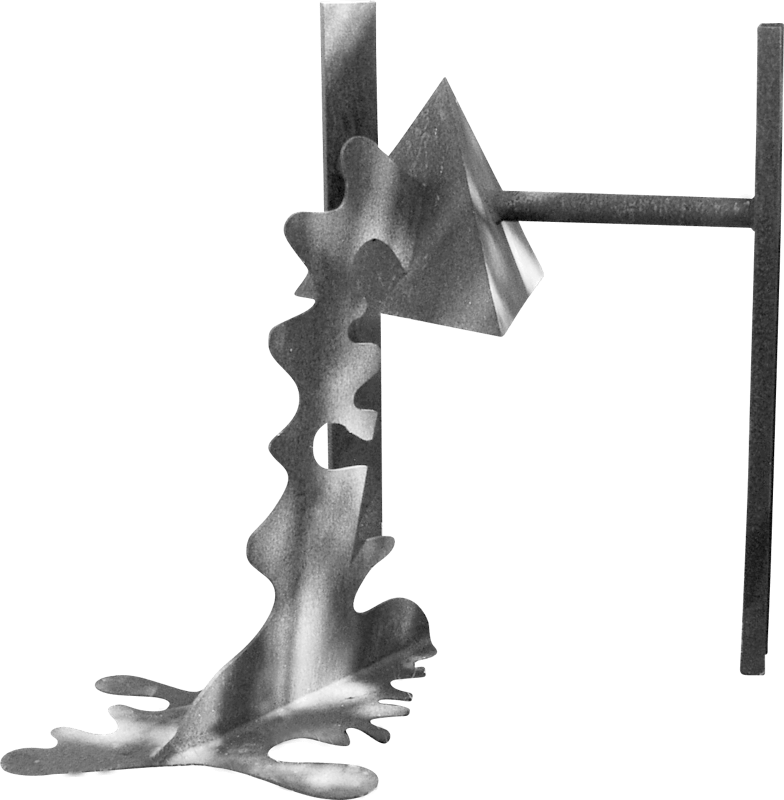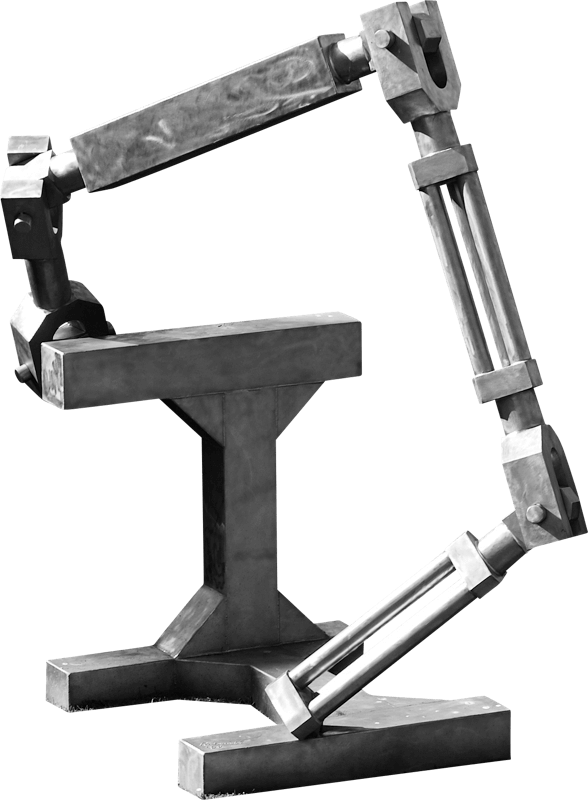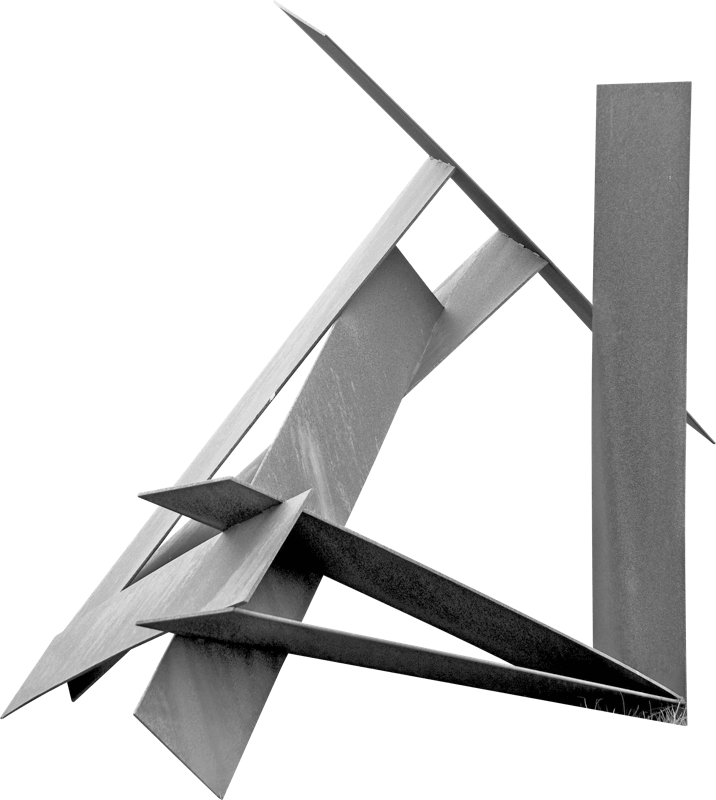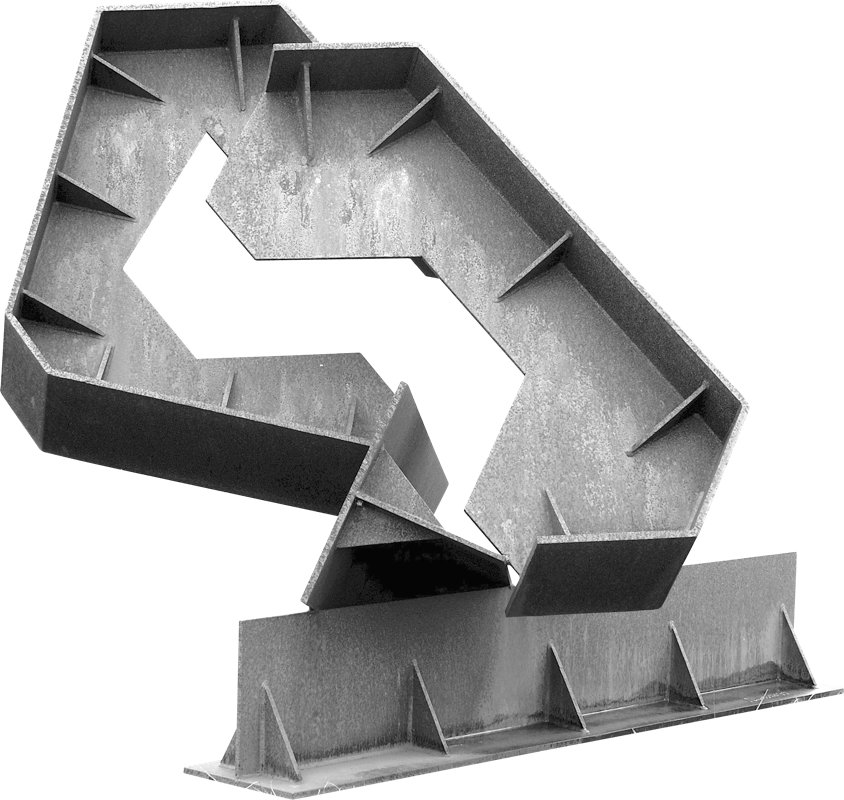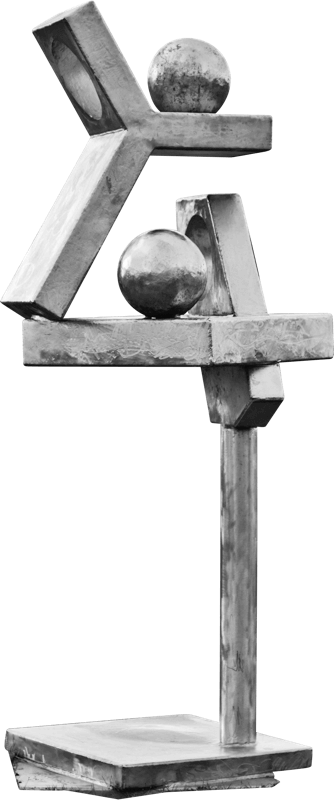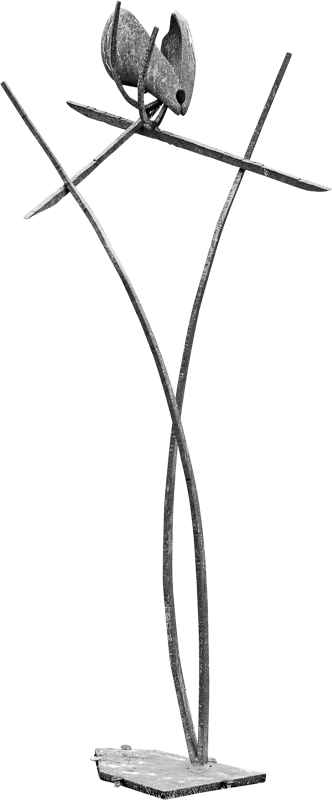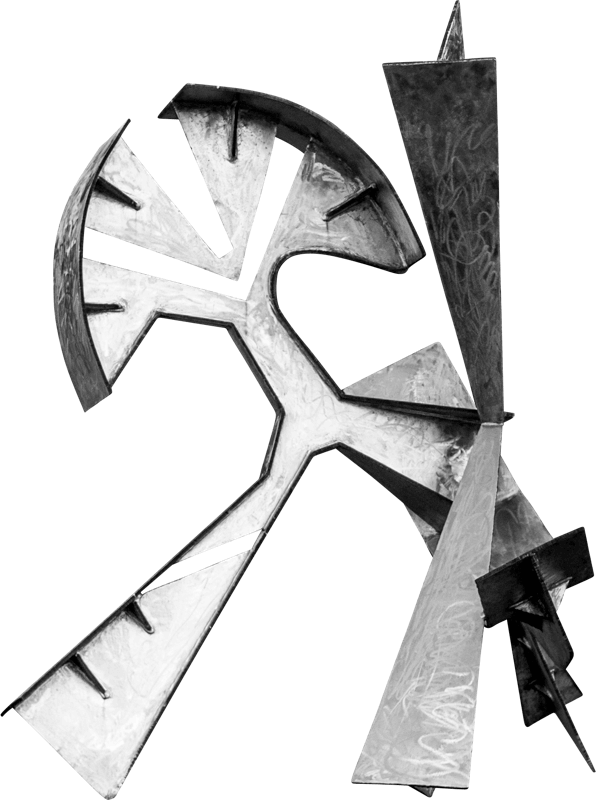More than thirty years in the making, the 200-acre Jeffrey Rubinoff Sculpture Park is home to over a hundred steel sculptures – artist Jeffrey Rubinoff’s life’s work.
2024 Award Calls Open Until Feb 4 2024
2024 Rubinoff Post-Doctoral Award for Research in Art as A Source of Knowledge
Aimed at early career researchers anywhere in the world, Postdoctoral Awards offer $7,000 CAD (roughly $5,100 USD or £4,100) to support research leading to one or more publications on any subject relating to art and knowledge. Themes might include but are not limited to the connections between visual art and cognition/understanding; digital technology and artificial intelligence; ethical/political issues; other fields of knowledge; and the sacred or numinous. To apply, download the Postdoctoral Awards 2024 Application.
Coming Soon … 2024 Award for Work Inspired by the Sculpture Collection
Criteria and award amount are being finalized. The award is intended to co-fund the costs of travel to the park, limited residency, and production costs for creative professionals in the process of or wishing to make work (essay, thesis, creative writing, art, music, film, etc) inspired by the Rubinoff’s art, thought or the JRSP. To inquire please email: curator AT rubinoffsculpturepark.org
Art and Knowledge after 1900: Interactions between modern art and thought
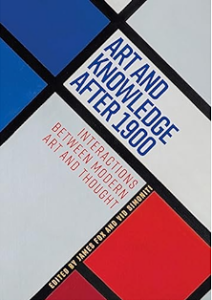 Jeffrey Rubinoff considered the value of Art as a Source of Knowledge to be central to his work stating: “The purpose of the work is to extend the ancient narrative of art and consequently rekindle the historical spirit of modernism. In addition to viewing the work, which includes the Sculpture Park itself, the goal is to revive the interdisciplinary creative impetus of early modernism and to attain the understanding of art as a serious and credible source of special insight for the evolution of ideas.”
Jeffrey Rubinoff considered the value of Art as a Source of Knowledge to be central to his work stating: “The purpose of the work is to extend the ancient narrative of art and consequently rekindle the historical spirit of modernism. In addition to viewing the work, which includes the Sculpture Park itself, the goal is to revive the interdisciplinary creative impetus of early modernism and to attain the understanding of art as a serious and credible source of special insight for the evolution of ideas.”
Near the end of his life, he endowed the JRSP Educational Programme with the aim of expanding the perception of art as a source of knowledge through a major publication series. Dr. James Fox and Dr. Vid Simoniti’s Art and Knowledge After 1900 is the first in this series and a major milestone in what we hope will be a fruitful field of study. The book is available now for pre-order.
Art and Knowledge After 1900 is available on Amazon for pre-order and will ship December 5th.
Synopsis: “This ground-breaking new history of modern art explores the relationship between art and knowledge from the beginning of the twentieth century to the present day. Each chapter examines artistic responses to a particular discipline of knowledge, from quantum theory and theosophy to cybernetics and ethnic futurisms. The authors argue that art’s incursion into other intellectual disciplines is a defining characteristic of both modernism and postmodernism. Throughout, the volume poses a series of larger questions: is art a source of knowledge? If so, what kind of knowledge? And, ultimately, can it contribute to our understanding of the world in ways that thinkers from other fields should take seriously?”
Podcast about the 2023 Forum on Art and Music
Fiji Mermaid Radio Program Episode Sep 13 2023
Topic: 2023 JRSP Company of Ideas Forum on Art and Music
Produced by: Pascalle Sabine Ricard, MA Candidate, Art History & Visual Studies University of Victoria
Description: Ricard presents excerpts from the Jeffrey Rubinoff Sculpture Park Company Of Ideas Forum. This years Forum was on the theme of Art and Music.
2024 Park Openings Dates and Concert Performances
Jeffrey Rubinoff wanted the Park to be a place for the appreciation of non-commodity values of art. As such, there is no charge for admittance, or for tours, concerts, or events. The sculptures are permanently sited. They are not for sale, and cannot be shown in another museum or any other context.
2024 Public openings are 9:30 am to 1:30 pm on the following days:
Tuesday July 16
Thursday July 18
Tuesday July 23
Thursday July 25 – Possible special event (TBD)
Friday July 26 – Possible special event (TBD)
Tuesday July 30 – Three Site specific Sound Art Compositions by Daniela O’Fee
Thursday Aug 1 – Site specific Sound Art Composition by Jess Conn Potegal
[ Listening Sessions throughout the day ]
Tuesday Aug 6 – Borealis String Quartet
Thursday Aug 8 – Borealis String Quartet
[ Concerts at 12 noon ]
Friday Aug 9 – Possible evening event (TBD)
Tuesday Aug 13
Thursday Aug 15
Masters of Counterpoint Series August 6th and August 8th, 2024
Tuesday August 6 @ 12pm
Thursday August 8 @ 12pm
The Borealis String Quartet will perform the selected repertoire to highlight the connection between counterpoint in musical and sculptural form.
Please bring a blanket or folding chairs and enjoy the performance outdoors in our amphitheatre. We encourage visitors to arrive early, reserve a spot, and then peruse the park. We also encourage visitors to bring sunscreen and water, it will be a hot day. Washrooms will not be available during the concert.
Guided Tours
Custom Tours can be booked on any opening day, other than concert openings. Tours generally depart around 10am
Please email curator@rubinoffsculpturepark.org to book a spot on the tour.
2023 Forum on Art and Music - Proceedings on You Tube
ABOUT THE 2023 COMPANY OF IDEAS FORUM ON ART AND MUSIC
—Download Proceedings—
The arts have been compared for thousands of years. From Horace’s notion of ‘ut pictura poesis’ and the paragone debates of the Renaissance, theorists and practitioners have long been fascinated by the similarities and differences between painting and sculpture, poetry and music. Some, such as Gotthold Ephraim Lessing, believed these disciplines were fundamentally different: the former being ‘spatial’ while the latter being ‘temporal’. Others instead stressed their affinities: at the end of the nineteenth century, Walter Pater famously claimed that ‘all art constantly aspires to the condition of music’.
Jeffrey Rubinoff was himself profoundly influenced by music. He aimed to give his sculpture ‘rhythm’, ‘harmony’, ‘melody’ and ‘syncopation’, and even nicknamed one series his ‘Brandenburg Concertos’. In many respects he worked like a classical composer: creating motifs then developing and recapitulating them sequentially. Above all, he drew on the musical notion of counterpoint. Just as a composer combines multiple voices in one work, so he attempted to create a conversation of visual polyphonies, within and between sculptures, and with the spectacular landscape that surrounds them.
Over the last hundred years, old distinctions between the arts have become increasingly blurred. From Luigi Russolo and Marcel Duchamp onwards, a number of modern and postmodern artists experimented with sound and music. Contemporary practitioners now move freely between disciplines, artforms and media, combining visual, aural and textual dimensions. Many no longer even use categories such as painting, sculpture, poetry or music, but speak of ‘sound art’, ‘audio art’, ‘sonic art’ and ‘transmedia’ or ‘multi-media’ practices.
At this year’s Forum, we’ll explore the complex and fascinating relationship between visual art and music. Over two days, delegates will interrogate a cluster of related questions. These include but are not limited to:
- How have theorists compared art and music over the centuries?
- How have visual artists used the dimension of time?
- Did abstraction bring these artforms closer together?
- How have visual artists and musicians collaborated?
- How far have multi-media practices dissolved old cultural categories?
- How have digital technologies altered the relationship between these and other artforms?
- How have artists used sound to raise awareness about non-western cultural traditions, colonial histories and climate change?
DAY 1 PRESENTATIONS
Dr Vanessa Brassey, King’s College London
Time for Beauty
Samantha Chang, University of Toronto
Listening to Painting: Music Inside the Painter’s Studio
Dr Michelle Liu, Monash University
Abstract Art & Music
Seth Kim-Cohen, Art Institute of Chicago
We’re Trying To Get A Light On Him Now
Pascalle Ricard
Squeaking Chairs & Mechanical Clatter: The Puppets Forsaken, Sculpture Informed by Noise Music
Miranda Carroll
Art as Instrument: Exploring Urban Sonic Spaces in Étienne Paquette’s Instrument à Vent
Lewis Nicholson
The Sound of Clay: The Curious Life of The Ocarina
Shaylin Allison
Anishinaabe drumming and visual art: engagements and influences
DAY 2 PRESENTATIONS
Prof. Paul Walde (University of Victoria) in conversation with James Fox
Notating Nature: Reflections on Scoring Techniques
Jess Conn-Potegal & Karun Koernig in conversation with Josh Fitzgerald
Sculpture in Elastic Space
Daniela O’Fee
Transmissions: Sonic Improvisations on the Sculptures of Jeffrey Rubinoff
Vaughn Neville in conversation with James Fox
Making Paintings and Making Music
Vithória Konzen Dill
The S(ex) Tapes (2020): Conveying the Rawness and Vulnerability of Heartbreak Through Film and Music
McKaila Ferguson
“Raynershine”: Gordon Rayner, Abstract Expressionism, and The Artists’ Jazz Band
Megan Austin
Finding Rhythm: Melodic Interventions of the Body in Naamsa Tsabar’s Sculpture
Anna O’Meara
A Space Beyond Space: Arnold Schönberg, Isidore Isou & the Kabbalah
The Rubinoff sculpture collection
The Jeffrey Rubinoff Sculpture Park is the permanent site for over a hundred works by sculptor Jeffrey Rubinoff. Rubinoff spent over three decades reshaping the land to best showcase his artistic output.
He established the Sculpture Park to ensure perpetual access to and interpretation of the collection. The Park was also founded to promote the study and understanding of art as a source of knowledge.
Rubinoff believed that ‘art was an act of will in accord with a mature conscience’, and that the knowledge it contained and expressed could play an important role in the evolution of ideas, as well as its viewers’ consciences.

